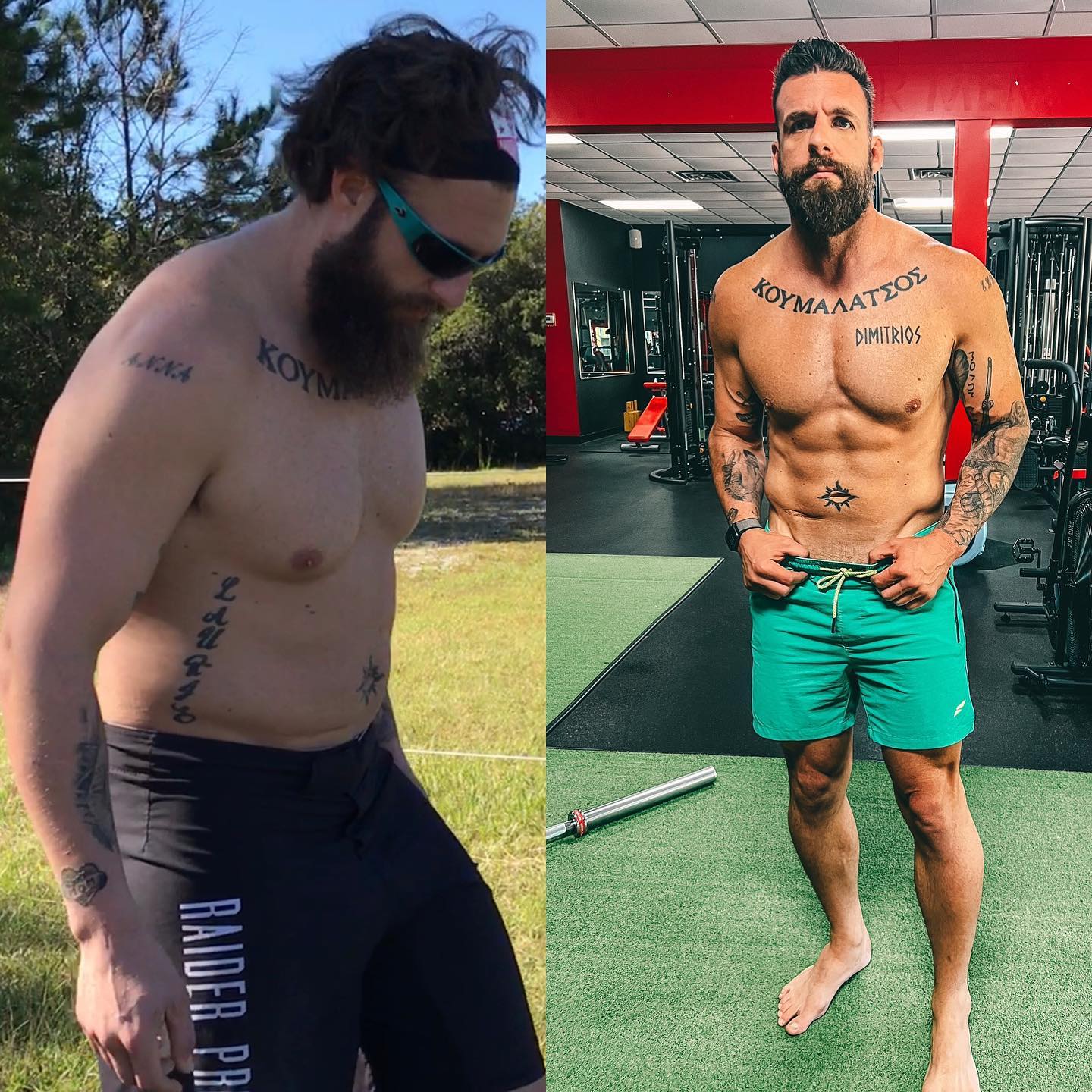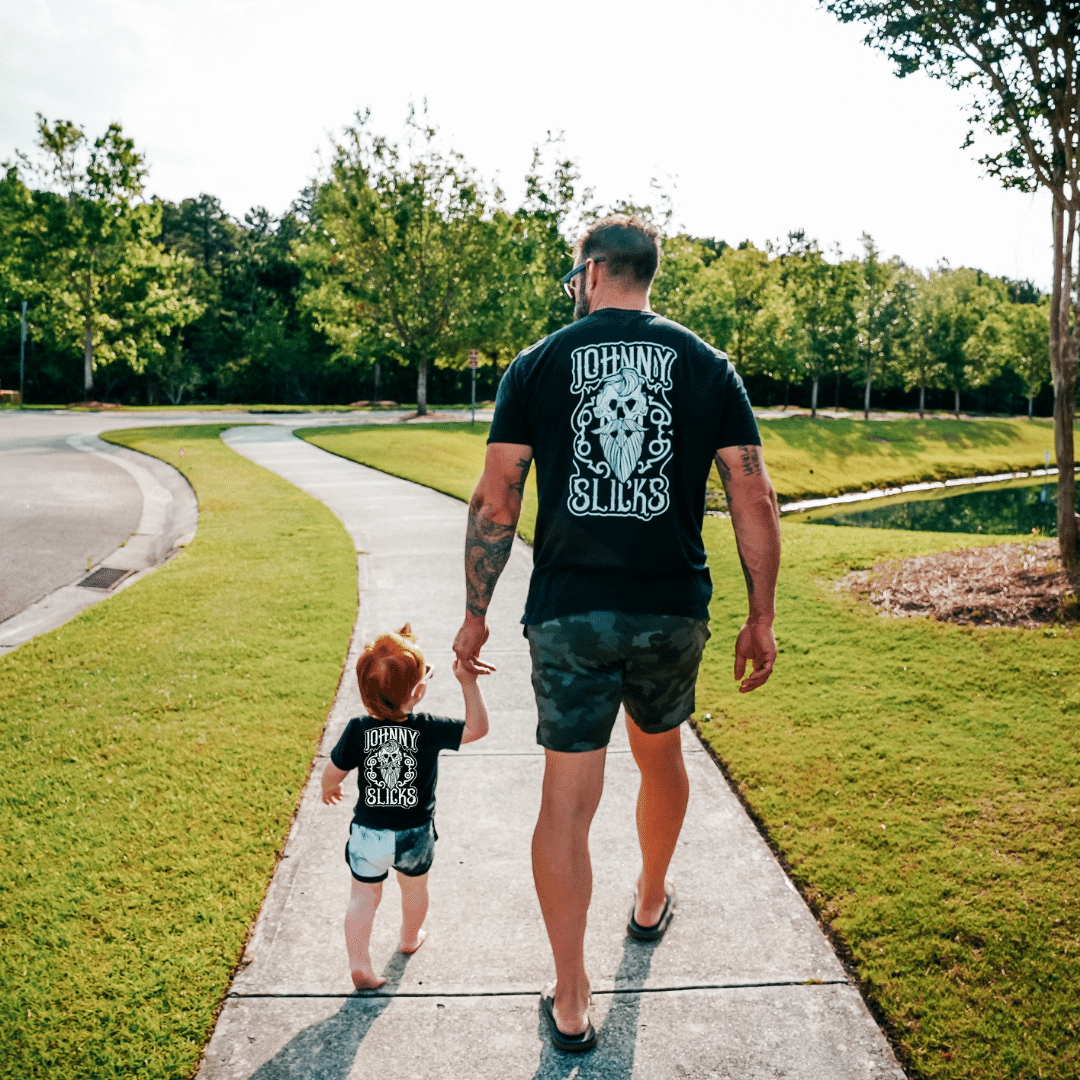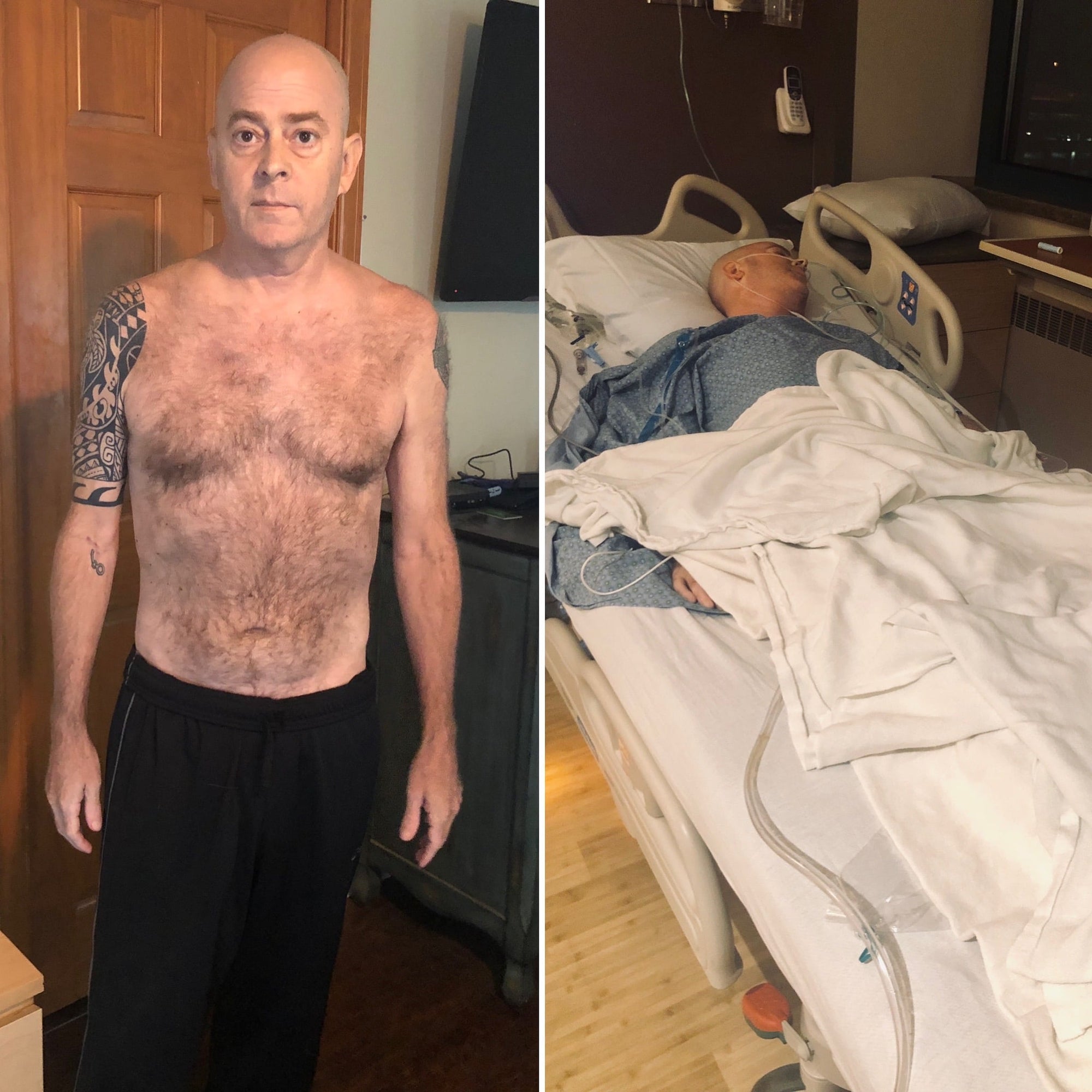SOME ACCIDENTAL DEATHS ARE UNAVOIDABLE—WRONG PLACE, WRONG TIME. BUT MOST AREN'T. STAYING ALIVE REQUIRES RECOGNIZING DANGER, FEELING FEAR, AND REACTING. HERE'S WHAT YOU NEED TO KNOW TO SURVIVE BEAR ATTACKS, CHAINSAW ACCIDENTS, AND EVEN VENGEFUL VENDING MACHINES.
Accidents are the leading cause of death among U.S. men 18 to 50 years old, accounting for 37,000 of the roughly 148,000 annual fatalities. Some instances of unintentional death, to use the official term, are unavoidable—wrong place, wrong time—but most aren't. Staying alive requires recognizing danger, feeling fear, and reacting. "We interpret external cues through our subconscious fear centers very quickly," says Harvard University's David Ropeik, author of How Risky Is It, Really? Trouble is, even smart, sober, experienced men can fail to register signals of an imminent threat. Here we present 20 easy-to-miss risks, and how to avoid or survive them.
1. OUTSMART WILDLIFE.
If you come face-to-face with a wild animal, the natural response is to bolt, but that can trigger the animal's predatory instinct. On July 6, 2011, Brian Matayoshi, 57, and his wife, Marylyn, 58, were hiking in Yellowstone National Park when they came upon a grizzly bear and fled, screaming. Brian was bitten and clawed to death; Marylyn, who had stopped and crouched behind a tree, was approached by the bear but left unharmed.
STAT: Each year three to five people are killed in North America in wild animal attacks, primarily by sharks and bears.
DO: Avoid shark-infested waters, unless you are Andy Casagrande. As for bears, always carry repellent pepper spray when hiking; it can stop a charging bear from as much as 30 feet away. To reduce the risk of an attack, give bears a chance to get out of your way. "Try to stay in the open," says Larry Aumiller, manager of Alaska's McNeil River State Game Sanctuary. "If you have to move through thick brush, make noise by clapping and shouting."
2. DON'T MESS WITH VENDING MACHINES.
You skipped lunch. You need a snack. You insert money into a vending machine, press the buttons, and nothing comes out. You get mad.
STAT: Vending machines caused 37 deaths between 1978 and 1995, crushing customers who rocked and toppled the dispensers. No recent stats exist, but the machines are still a danger.
DON'T: Skip lunch.
3. STAY ON THE DOCK.
On May 20, 2013, Kyle McGonigle was on a dock on Kentucky's Rough River Lake. A dog swimming nearby yelped, and McGonigle, 36, saw that it was struggling to stay above water. He dove in to save the dog, but both he and the animal drowned, victims of electric-shock drowning (ESD). Cords plugged into an outlet on the dock had slipped into the water and electrified it.
STAT: The number of annual deaths from ESD in the U.S. are unknown, since they are counted among all drownings. But anecdotal evidence shows that ESD is widespread. ESD prevention groups have successfully urged some states to enact safety standards, including the installation of ground-fault circuit interrupters and a central shutoff for a dock's electrical system.
DON'T: Swim within 100 yards of any wired dock. But do check whether docks follow safety standards.
4. KEEP IT ON THE DIRT.
On the morning of July 14, 2013, Taylor Fails, 20, turned left in his 2004 Yamaha Rhino ATV at a paved intersection near his Las Vegas–area home. The high-traction tire treads gripped the road and the vehicle flipped, ejecting Fails and a 22-year-old passenger. Fails died at the scene; the passenger sustained minor injuries.
STAT: One-third of fatal ATV accidents take place on paved roads; more than 300 people died in on-road ATV wrecks in 2011.
DO: Ride only off-road. Paul Vitrano, executive vice president of the ATV Safety Institute, says, "Soft, knobby tires are designed for traction on uneven ground and will behave unpredictably on pavement." In some cases, tires will grip enough to cause an ATV to flip, as in the recent Nevada incident. "If you must cross a paved road to continue on an approved trail, go straight across in first gear."
5. MOW ON THE LEVEL.
Whirring blades are the obvious hazard. But most lawnmower-related deaths result from riding mowers flipping over on a slope and crushing the drivers.
STAT: About 95 Americans are killed by riding mowers each year.
DO: Mow up and down a slope, not sideways along it. How steep is too steep? "If you can't back up a slope, do not mow on it," Carl Purvis of the U.S. Consumer Product Safety Commission advises.
6. BEWARE LOW-HEAD DAMS.

Found on small or moderate-size streams and rivers, low-head dams are used to regulate water flow or prevent invasive species from swimming upstream. But watch out. "They're called drowning machines because they could not be designed better to drown people," says Kevin Colburn of American Whitewater, a nonprofit whitewater preservation group. To a boater heading downstream, the dams look like a single line of flat reflective water. But water rushing over the dam creates a spinning cylinder of water that can trap a capsized boater.
STAT: Eight to 12 people a year die in low-head and other dam-related whitewater accidents.
DO: Curl up, drop to the bottom, and move downstream if caught in a hydraulic. "It's a counterintuitive thing to do, but the only outflow is at the bottom," Colburn says. Surface only after you've cleared the vortex near the dam.
7. DON'T HOLD YOUR BREATH.
If you want to take a long swim underwater, the trick is to breathe in and out a few times and take a big gulp of air before you submerge. Right? Dead wrong. Hyperventilating not only doesn't increase the oxygen in your blood, it also decreases the amount of CO2, the compound that informs the brain of the need to breathe. Without that natural signal, you may hold your breath until you pass out and drown. This is known as shallow-water blackout.
STAT: Drowning is the fifth largest cause of accidental death in the U.S., claiming about 10 lives a day. No one knows how many of these are due to shallow-water blackout, but its prevalence has led to the formation of advocacy groups, such as Shallow Water Blackout Prevention.
DON'T: Hyperventilate before swimming underwater, and don't push yourself to stay submerged as long as possible.
8. KEEP YOUR FOOTING.
One mistake is responsible for about half of all ladder accidents: carrying something while climbing.
STAT: More than 700 people die annually in falls from ladders and scaffolding.
DO: Keep three points of contact while climbing; use work-belt hooks, a rope and pulley, or other means to get items aloft.
9. FORD CAREFULLY.
A shallow stream can pack a surprising amount of force, making fording extremely dangerous. Once you've been knocked off your feet, you can get dragged down by the weight of your gear, strike rocks in the water, or succumb to hypothermia.
STAT: Water-related deaths outnumber all other fatalities in U.S. national parks; no specific statistics are available for accidents while fording streams.
DO: Cross at a straight, wide section of water. Toss a stick into the current; if it moves faster than a walking pace, don't cross. Unhitch waist and sternum fasteners before crossing; a wet pack can pull you under.
10.LAND STRAIGHT.
You have successfully negotiated free fall, deployed your canopy, and are about to touch down. Safe? Nope. Inexperienced solo jumpers trying to avoid an obstacle at the last minute, or experienced skydivers looking for a thrill, might sometimes pull a toggle and enter a low-hook turn. "If you make that turn too low, your parachute doesn't have time to level out," says Nancy Koreen of the United States Parachute Association. Instead, with your weight far out from the canopy, you'll swing down like a wrecking ball.
STAT: Last year in the U.S., low-hook turns caused five of the 19 skydiving fatalities.
DO: Scope out your landing spot well in advance (from 100 to 1000 feet up, depending on your skill) so you have room to land without needing to swerve.
12. LET LEANING TREES STAND.
The motorized blade isn't always the most dangerous thing about using a chain saw. Trees contain enormous amounts of energy that can release in ways both surprising and lethal. If a tree stands at an angle, it becomes top-heavy and transfers energy lower in the trunk. When sawed, it can shatter midcut and create a so-called barber chair. The fibers split vertically, and the rearward half pivots backward. "It's very violent and it's very quick," says Mark Chisholm, chief executive of New Jersey Arborists.
STAT: In 2012, 32 people died felling trees.
DON'T: Saw into any tree or limb that's under tension.
13. DODGE LINE DRIVES.
America's national pastime may seem a gentle pursuit, but it is not without its fatal hazards. The 2008 book Death at the Ballpark: A Comprehensive Study of Game-Related Fatalities, 1862–2007 catalogs deaths that have occurred while people were playing, watching, or officiating at baseball games. Among the causes is commotio cordis, a concussion of the heart that leads to ventrical fibrillation when the chest is struck during a critical 10- to 30-millisecond moment between heartbeats. About 50 percent of all victims are athletes (and the vast majority of these are male) engaging in sports that also include ice hockey and lacrosse, the U.S. National Commotio Cordis Registry reports.
STAT: The registry recorded 224 fatal cases from 1996 to 2010. Commotio cordis is the No. 1 killer in U.S. youth baseball, causing two to three deaths a year.
DON'T: Take a shot to the chest. Even evasive action and protective gear are not significant deterrents. Of note: Survival rates rose to 35 percent between 2000 and 2010, up from 15 percent in the previous decade, due mainly to the increased presence of defibrillators at sporting events.
14. CLIMB WITH CARE.
Accidental shootings are an obvious hazard of hunting, but guess what's just as bad: trees. "A tree stand hung 20 feet in the air should be treated like a loaded gun, because it is every bit as dangerous," says Marilyn Bentz, executive director of the National Bow hunter Educational Foundation. Most tree-stand accidents occur while a hunter is climbing, she says.
STAT: About 100 hunters a year die falling from trees in the U.S. and Canada, a number "equal to or exceeding firearm- related hunting deaths," Bentz says.
DO: Use a safety harness tethered to the tree when climbing, instead of relying on wooden boards nailed to the tree, which can give way suddenly.
15. AVOID CLIFFING OUT.
Hikers out for a scramble may end up on an uncomfortably steep patch and, finding it easier to climb up than down, keep ascending until they "cliff out," unable to go either forward or back. Spending a night freezing on a rock face waiting to be rescued is no fun, but the alternative is worse.
STAT: Falls are one of the top three causes of death in the wilderness, along with cardiac arrest and drowning. Cliffed-out hikers account for 11 percent of all search-and-rescue calls in Yosemite National Park.
DON'T: Take a shortcut you can't see the length of. If you realize you've lost your way, either backtrack or call for help. Gadgets such as DeLorme's inReach SE provide satellite communication to send a distress call from anywhere on the planet.
16. DON'T DRINK TOO MUCH.
We all know that dehydration can be dangerous, leading to dizziness, seizures, and death, but drinking too much water can be just as bad. In 2002, 28-year-old runner Cynthia Lucero collapsed midway through the Boston Marathon. Rushed to a hospital, she fell into a coma and died. In the aftermath it emerged that she had drunk large amounts along the run. The excess liquid in her system induced a syndrome called exercise-associated hyponatremia (EAH), in which an imbalance in the body's sodium levels creates a dangerous swelling of the brain.
STAT: Up to one-third of endurance athletes who collapse during events suffer from EAH. Between 1989 and 1996, when the U.S. Army mandated heavy fluid intake during exercise in high heat, EAH caused at least six deaths.
DON'T: Drink more than 1.5 quarts per hour during sustained, intense exercise. But do consume plenty of salt along with your fluids.
17. USE GENERATORS SAFELY.
After Hurricane Sandy, many homeowners used portable generators to replace lost power, leaving the machines running overnight and allowing odorless carbon monoxide to waft inside. The gas induces dizziness, headaches, and nausea in people who are awake, but "when people go to sleep with a generator running, there's no chance for them to realize that something's wrong," says Brett Brenner, president of the Electrical Safety Foundation International.
STAT: Carbon monoxide from consumer products, including portable generators, kills nearly 200 a year. Of the Sandy-related deaths, 12 were due to carbon monoxide poisoning.
DO: Keep generators more than 20 feet from a house.
18. DON'T SLIP–SLIDE AWAY.
Hikers on a glacier or in areas where patches of snow remain above the tree line may be tempted to speed downhill by sliding, or glissading. Bad idea: A gentle glide can easily lead to an unstoppable plummet. In 2005 climber Patrick Wang, 27, died on California's Mount Whitney while glissading off the summit; he slid 300 feet before falling off a 1000-foot cliff.
STAT: One or two people die each year while glissading.
DON'T: Glissade, period. But if you ever do it, you should be an expert mountaineer with well-practiced self-arrest techniques. Glissaders should always remove their crampons and know their line of descent.
19. GO WITH THE FLOW.
The tourist season got off to a grisly start this year in Gulf Shores, Ala. During a two-day period in early June, four men drowned after being caught in rip currents. The unusually strong currents were invisible, not even roiling the surface. Rip currents occur when water rushing back from the shoreline is channeled through a narrow gap between two sand bars, accelerating the outward flow.
STAT: More than 100 Americans drown in rip currents each year.
DO: Allow the current to carry you out beyond the riptide's flow, then swim laterally until you reach a position where you can turn and stroke safely to shore.

20. BEAT THE HEAT.
A rock formation in Utah called The Wave is remote and beautiful, but also arid and sweltering. This past July a couple hiking the area were found dead after the afternoon heat overwhelmed them. Scarcely three weeks later, a 27-year-old woman collapsed while hiking The Wave with her husband and died before he could get help.
STAT: An average of 675 people die each year in the U.S. from heat-related complications.
DO: Carry lots of fluids, hike in the morning, and let people know where you're going when trekking in the desert.
Leave a comment
Also in The Guide


STOP doing these things and START doing these!


The hardest thing you will ever do? Seriously!?
t's often said that being a dad is one of the hardest things you'll ever do.
I disagree.
Being a dad has been one of the most fulfilling things I've ever experienced in my life.



